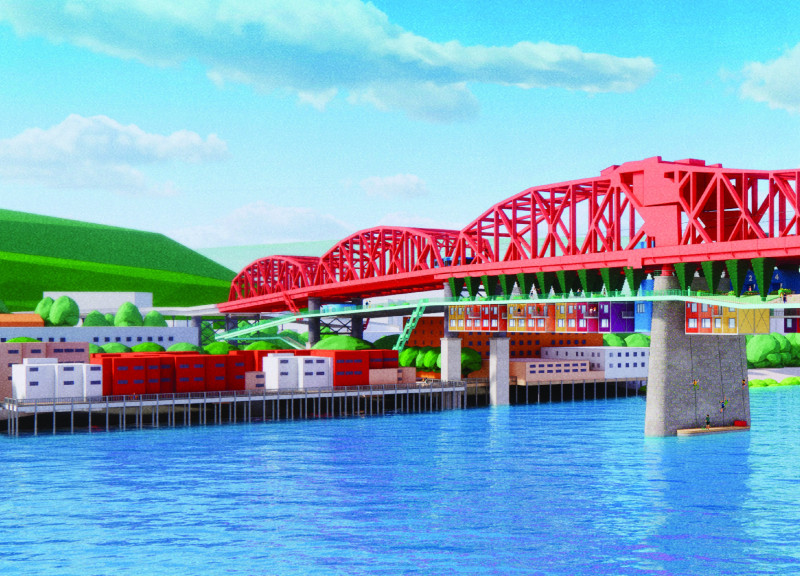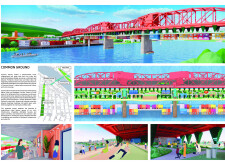5 key facts about this project
**Analytical Report: Common Ground Architectural Design Project**
The Common Ground project is situated around the Broadway Bridge in Portland, Oregon, aiming to enhance urban connectivity through a reimagining of public spaces along the city's riverbanks. This initiative is designed to integrate the natural environment with the built setting, fostering a linear neighborhood and urban park that serves diverse community needs. It emphasizes the importance of community engagement by providing interactive spaces for residents and visitors to converge, while also resonating with the historical context of the area by drawing on local narratives and architectural styles.
### Community Engagement and Spatial Strategy
Central to the design is the focus on community-oriented spaces that facilitate social interaction. The spatial organization includes a network of pedestrian pathways, recreational areas, and community facilities arranged beneath and around the bridge, creating an environment that promotes inclusive participation. This layout supports a variety of activities, offering shaded areas for gatherings, open green spaces for leisure, and structured locations for community programs, thereby enhancing the overall user experience and promoting a strong sense of place.
### Materiality and Ecological Integration
The project employs a carefully selected palette of materials that contribute to both aesthetic appeal and functional performance. Key materials include durable steel for structural components, transparent glass for community buildings, and concrete for pathways, all chosen to enhance longevity and stability. Wood elements serve to create inviting installations throughout the park. Additionally, the integration of native vegetation and sustainable landscaping practices bolsters local biodiversity and ecological resilience. Effective stormwater management strategies further demonstrate a commitment to environmental sustainability, embedding natural processes within the urban framework and ensuring that the design interacts harmoniously with the surrounding ecosystem.


















































